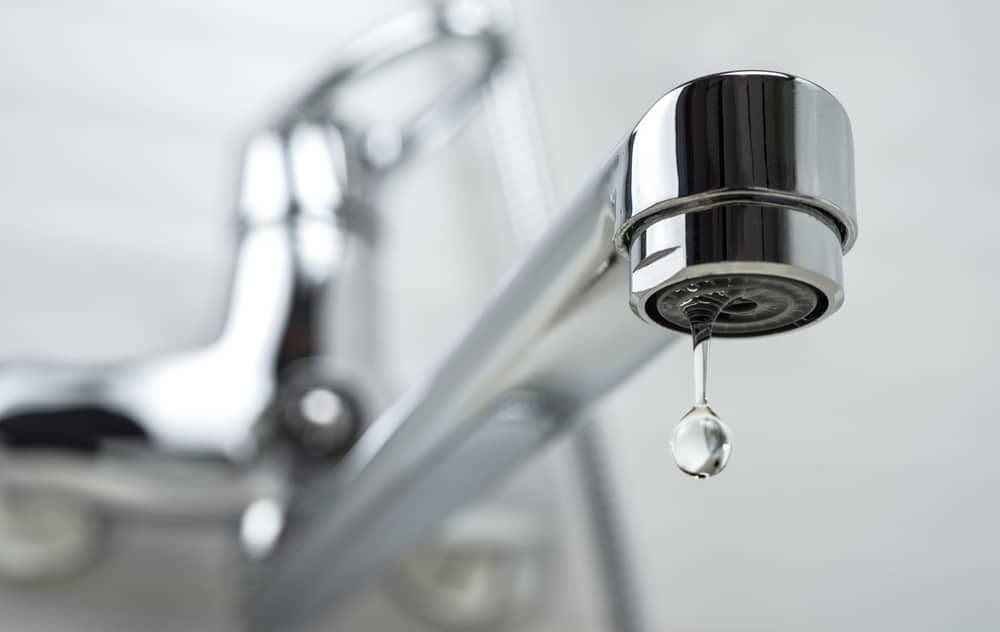Fast Methods for Solving Low Water Pressure in Your Home
Fast Methods for Solving Low Water Pressure in Your Home
Blog Article
Just how do you really feel about 4 Ways to Troubleshoot Low Water Pressure?

Low water pressure in your house can be a frustrating issue, impacting everything from bathing to cleaning dishes. If you're experiencing weak water flow, there are a number of possible reasons and remedies to discover. In this overview, we'll review usual factors for low tide pressure and sensible actions to deal with the concern successfully.
Intro to Low Tide Pressure
Low water pressure takes place when the circulation of water from your taps, showers, and other components is weaker than typical. This can make day-to-day tasks a lot more challenging and much less effective. Understanding the sources of low tide pressure is critical to finding the appropriate remedy.
Typical Reasons For Low Water Pressure
Pipeline Obstructions
With time, pipelines can become blocked with natural resource, debris, or debris, restricting the flow of water. This is a common problem in older homes with galvanized steel pipelines.
Deterioration
Rust within pipelines can result in leaks and lowered water stress. Rust accumulation can restrict water flow, particularly in aging plumbing systems.
Faulty Pressure Regulatory Authorities
Pressure regulatory authorities are responsible for maintaining constant water stress in your home. If they malfunction, it can lead to low tide stress or uneven circulation throughout your home.
Metropolitan Water Issues
Often, the problem exists outside your home. Municipal water issues, such as main line leakages or maintenance work, can briefly minimize water stress in your area.
Just How to Identify Low Tide Pressure
Checking Taps and Components
Start by checking the water pressure at different faucets and fixtures throughout your home. If the problem is separated to particular areas, it might show local troubles.
Examining Pipes
Evaluate visible pipelines for indicators of leaks, corrosion, or blockages. Pay attention to any kind of unusual noises, such as knocking or rattling pipelines, which can show problems within the plumbing system.
Consulting with a Plumber
If you're incapable to pinpoint the root cause of low tide pressure, think about working with a specialist plumber to conduct a comprehensive inspection. They can identify underlying issues and suggest appropriate options.
Do It Yourself Solutions to Fix Low Water Pressure
Cleansing Aerators and Showerheads
Mineral deposits can collect in aerators and showerheads, minimizing water circulation. Get rid of and clean these elements routinely to boost water stress.
Flushing Hot Water Heater
Sediment accumulation in the hot water heater can limit flow and minimize efficiency. Flushing the storage tank periodically aids remove sediment and preserve optimum efficiency.
Examining Stress Regulatory Authority
Guarantee that the stress regulator is operating appropriately. Adjusting or changing the regulatory authority can help bring back correct water stress throughout your home.
Cleaning Clogs in Pipeline
For small blockages, try making use of a plumbing serpent or chemical drainpipe cleaner to clear blockages in pipelines. Beware when using chemicals and adhere to security guidelines.
When to Call a Professional Plumber
If DIY initiatives stop working to fix the issue or if you presume considerable plumbing issues, it's finest to seek aid from a qualified plumber. They have the know-how and tools to attend to intricate issues securely and effectively.
Safety Nets to Maintain Water Pressure
Normal Upkeep
Arrange routine maintenance for your plumbing system to avoid concerns such as deterioration, leakages, and obstructions. Dealing with minor problems early can aid stay clear of more substantial repair work later.
Installing a Stress Booster
Think about installing a stress booster pump to improve water pressure in areas with regularly low flow. This can be especially advantageous for multi-story homes or residential or commercial properties with high-demand components.
Monitoring Water Usage
Be mindful of water usage practices and prevent ill-using the plumbing system. Straightforward adjustments, such as incredible showers and laundry tons, can help keep ample water stress.
Verdict
Managing low tide pressure can be aggravating, but determining the underlying causes and implementing ideal remedies can restore optimum circulation throughout your home. Whether it's cleaning up aerators, evaluating pipes, or talking to a plumber, taking proactive steps can guarantee a consistent supply of water for your everyday needs.
FOUR WAYS TO FIX LOW WATER PRESSURE NOW
Turning on a shower or faucet only to find the water comes out in a sad, slow drizzle is never a good feeling. How exactly are you supposed to wash a pan or take a quick shower when it takes 10 minutes just to rinse off a little soap? The good news is that when your water pressure is bad, there's always a cause: typically one that can be easily fixed. Here are some of the most common causes of low pressure and what you can do to fix the issue:
DEBRIS AND MINERAL DEPOSIT BUILDUPS
If you notice low water pressure from just one or two of the fixtures in your house, the problem likely has to do with debris buildup. Water is full of minerals and other debris, all of which can accumulate in your pipes and on your fixtures. This can cause a blockage that affects how much water flows through. To fix this, try filling a small plastic bag with white vinegar, and use a rubber band to hang it around your showerhead or faucet. Let the head of the fixture soak for a few hours, and the vinegar should loosen the deposits.
WATER LEAKS
Leaks are another common cause of low water pressure. If water is flowing out of your plumbing through a hole or crack before it can reach your fixture, the pressure coming out of the faucet or showerhead will be lower. A plumbing professional is your best bet for finding and repairing a leak in your water supply pipes.
Leaks are another common cause of low water pressure. If water is flowing out of your plumbing through a hole or crack before it can reach your fixture, the pressure coming out of the faucet or showerhead will be lower. A plumbing professional is your best bet for finding and repairing a leak in your water supply pipes.
FOUR WAYS TO FIX LOW WATER PRESSURE NOW
Turning on a shower or faucet only to find the water comes out in a sad, slow drizzle is never a good feeling. How exactly are you supposed to wash a pan or take a quick shower when it takes 10 minutes just to rinse off a little soap? The good news is that when your water pressure is bad, there's always a cause: typically one that can be easily fixed. Here are some of the most common causes of low pressure and what you can do to fix the issue:
DEBRIS AND MINERAL DEPOSIT BUILDUPS
If you notice low water pressure from just one or two of the fixtures in your house, the problem likely has to do with debris buildup. Water is full of minerals and other debris, all of which can accumulate in your pipes and on your fixtures. This can cause a blockage that affects how much water flows through. To fix this, try filling a small plastic bag with white vinegar, and use a rubber band to hang it around your showerhead or faucet. Let the head of the fixture soak for a few hours, and the vinegar should loosen the deposits.
WATER LEAKS
Leaks are another common cause of low water pressure. If water is flowing out of your plumbing through a hole or crack before it can reach your fixture, the pressure coming out of the faucet or showerhead will be lower. A plumbing professional is your best bet for finding and repairing a leak in your water supply pipes.
Leaks are another common cause of low water pressure. If water is flowing out of your plumbing through a hole or crack before it can reach your fixture, the pressure coming out of the faucet or showerhead will be lower. A plumbing professional is your best bet for finding and repairing a leak in your water supply pipes.
A VALVE ISSUE
If you have low water pressure throughout your home, check your main shut-off valve to make sure it's completely open. You may also want to see if there's a pressure-reducing valve installed. If there is, have a plumber help you adjust the settings to get the pressure you're looking for.
OTHERS USING WATER
Believe it or not, your low water pressure could be caused by your neighbors. If you notice low pressure at certain times of day, it may be because you and the people living next to you have similar schedules - when everyone is showering at the same time, the pressure will be lower in every home. Low pressure throughout the neighborhood may also be caused by an issue with your municipal water supply. If that's the case, call the supplier to see if they're working on the issue.
https://www.rotorooter.com/blog/water-leaking/low-water-pressure-fixes/

I recently found that blog entry about 9 Reasons for Low Water Pressure in Your House while perusing the search engines. Enjoyed our entry? Please share it. Let someone else check it out. Thank you for being here. Return soon.
Schedule Service Pickup Report this page